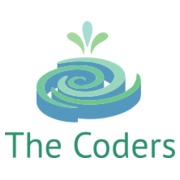The SCIC is Back
Nurses who did not enter home health until this decade may be familiar with SCIC’s. Maybe they read about them or they were briefly reviewed in orientation. In the early years of PPS, a SCIC or other follow-up assessment changed the payment of an episode. Then it didn’t. Soon it will again. So the Significant Change in Condition; or other follow-up is a thing and it’s about to be a bigger thing.
The Quarterly OASIS Q and A from Medicare state:
When diagnosis codes change between one 30-day claim and the next, there is no requirement for the HHA to complete an RFA 5- Other follow-up assessment to ensure that diagnosis coding on the claim matches to the OASIS assessment. The CoP 484.55(d) does require an RFA 05 when there has been a major improvement or decline in a patient’s condition that was not envisioned in the original Plan of Care. CMS expects agencies to have and follow agency policies that determine the criteria for when the Other Follow-up assessment is to be completed.
The OASIS User Manual defines ‘RFA-5 other follow-up’ as:
… comprehensive assessment is conducted due to a major decline or improvement in patient’s health status occurring at a time other than during the last five days of the episode. This assessment is done to re-evaluate the patient’s condition, allowing revision to the patient’s care plan as appropriate.
With 30-day claim periods and 60-day OASIS intervals, there may be changes in your patient’s condition causing your patient to need more care that are not reflected in payment. If this occurs during the first claim period, the SCIC assessment is a way to increase payment for the second 30-day claim period. The claim period will only be adjusted if the date of assessment occurs prior to the 30th day.
So, in crafting or revising your SCIC policy, a good place to start would be with the OASIS questions that will affect your outcomes and payment – particularly hospitalizations. Currently, you must collect information on hospitalization risk and it will affect payment. Why not include factors that might increase the patient’s risk for hospitalization?
- One or more falls
- Unintentional weight loss of a total of X pounds (contingent upon base weight of patient.)
- Any hospitalization, ER visit or MD visit that results in a change in orders.
- Persistent decline in mental, emotional, or behavioral status.
- Reported or observed history of difficulty complying with any medical instructions (for example, medications, diet, exercise) that is not corrected within two weeks with patient and caregiver education.
- New medications that require teaching
- Exhaustion that was not present on admission and does not result from exertion such as family outing or holiday.
All of these criteria have the potential to change the case mix weight. And remember that the Conditions of Participation state that risks for hospitalization should be on the care plan along with interventions on how to mitigate those risks.
Crafting a policy around two mandates already in effect will result in a policy that doesn’t require a lot of extra work to teach or monitor.
Should you have any questions or comments, please email us or leave a comment. If you have a different idea, we are open to hearing it.


 The admitting clinician’s largest contribution to payment is the functional domain which has been chronically under assessed and given the least attention of all payment elements. Many agencies will be leaving money on the table and risking denials for homebound status if nurses and therapists don’t know how to respond to the questions make up the functional status. There are eight OASIS questions used to in the PDGM calculations and seven of them are the functional domain questions.
The admitting clinician’s largest contribution to payment is the functional domain which has been chronically under assessed and given the least attention of all payment elements. Many agencies will be leaving money on the table and risking denials for homebound status if nurses and therapists don’t know how to respond to the questions make up the functional status. There are eight OASIS questions used to in the PDGM calculations and seven of them are the functional domain questions.